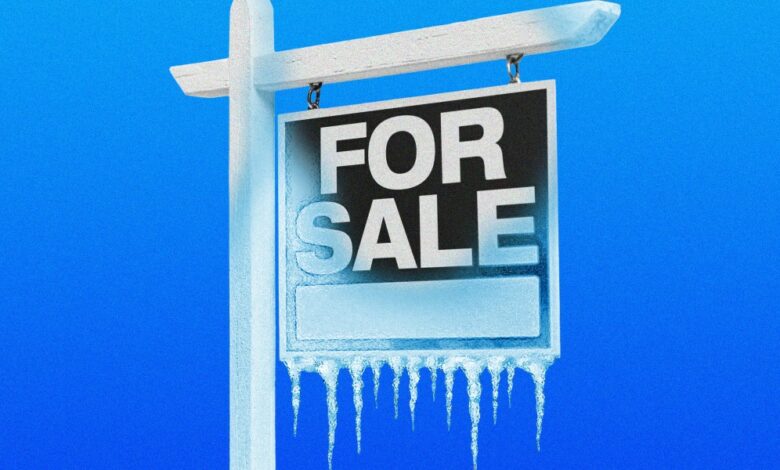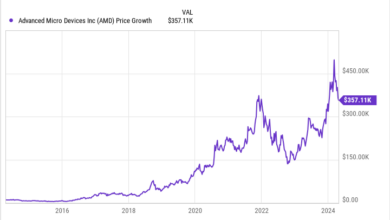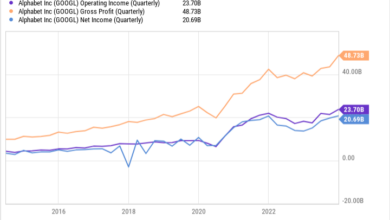The housing market’s deep freeze is showing signs of thawing


The housing market fell into a deep freeze last year. Home prices rose considerably during the pandemic-fueled housing boom, but then, the Federal Reserve began raising interest rates to tame inflation, which had reached a four-decade high. As a result, mortgage rates skyrocketed, peaking at just above 8%, after being at historic lows.
America embarked on the least affordable housing market in decades. But those with low mortgage rates or simply no mortgage at all were practically fine, so they held onto their homes, further constraining supply in a market that’s already missing homes. And existing home sales fell to their lowest point in nearly 30 years. But things seem to be changing, and the phenomenon referred to as the lock-in effect is easing.
“Following eight months of declines, February is the first month the number of homes for sale has increased on an annual basis,” Redfin data journalist Dana Anderson wrote in a Thursday housing market update.
New listings of homes for sale leaped 13% from a year earlier during the four weeks ending March 3; it’s the biggest increase in almost three years, according to Redfin. The jump in new listings brought the total number of homes for sale up 1.7%.
“There have been two major obstacles for homebuyers over the last year: Low inventory and high housing costs,” said Chen Zhao, Redfin’s head of economic research. “Now, the first barrier is starting to come down as more supply comes on the market.”
She continued: “Housing costs are still high, but they’re likely to come down a bit as mortgage rates gradually decline through the year and price growth loses some steam. Buyers who can afford today’s mortgage rates may have better luck finding a home now than they have in the past several months, and they also may be less likely to face competition because inventory is improving.”
The average 30-year fixed mortgage rate just fell below 7% yesterday and is currently sitting at 6.97%. It’s a far cry from the around 3% mortgage rates that filled the pandemic, but it’s significantly lower than 8%, and a much easier pill to swallow for prospective buyers. That’s why the lock-in effect is showing signs of easing in terms of more available inventory: Homeowners that were previously refusing to sell are likely realizing those historically low mortgage rates aren’t coming back, at least not anytime soon. And people that have to move for reasons beyond them—death, marriage, employment opportunities, whatever it may be—and can no longer wait, are doing exactly that.
There is some regional variation in inventory, as with most housing-related stuff. In terms of new listings, Fort Worth, Fort Lauderdale, Houston, Jacksonville, and Miami were the metropolitan areas with the biggest annual increases—each one saw their new listings rise by more than 24%. In contrast, three major metropolitan areas saw their new listings decline during the same period: Atlanta, Newark, and Chicago.
Still, touring activity is up 23% from the start of the year (during the same period last year, it was only up 14%), and mortgage purchase applications are up 11% from the prior week, according to Redfin. Sales, however, might take more time to see a boost.
“We’re at a turning point,” Realtor.com’s chief economist said at the end of January. Several economists, toward the end of last year, predicted affordability would ease slightly this year as mortgage rates dropped gradually. In the housing world, spring is seen as a pivotal selling season, so some of these trends are reflective of that. Still, there are signs of improvement—and the season is just beginning.
But where there may be improvement in supply, as Redfin’s head of economic research explained, housing costs are still a problem. The median sale price for the four weeks ending March 3 is $368,588—that’s up 5.3% from last year. The median asking price is $399,223, which is up 5.1% from last year, but it was the smallest increase since the middle of January, according to Redfin. And while peak home price appreciation might be behind us, would-be homebuyers still need to make almost $50,000 more to afford to buy a home than they did before the pandemic.
Source link




